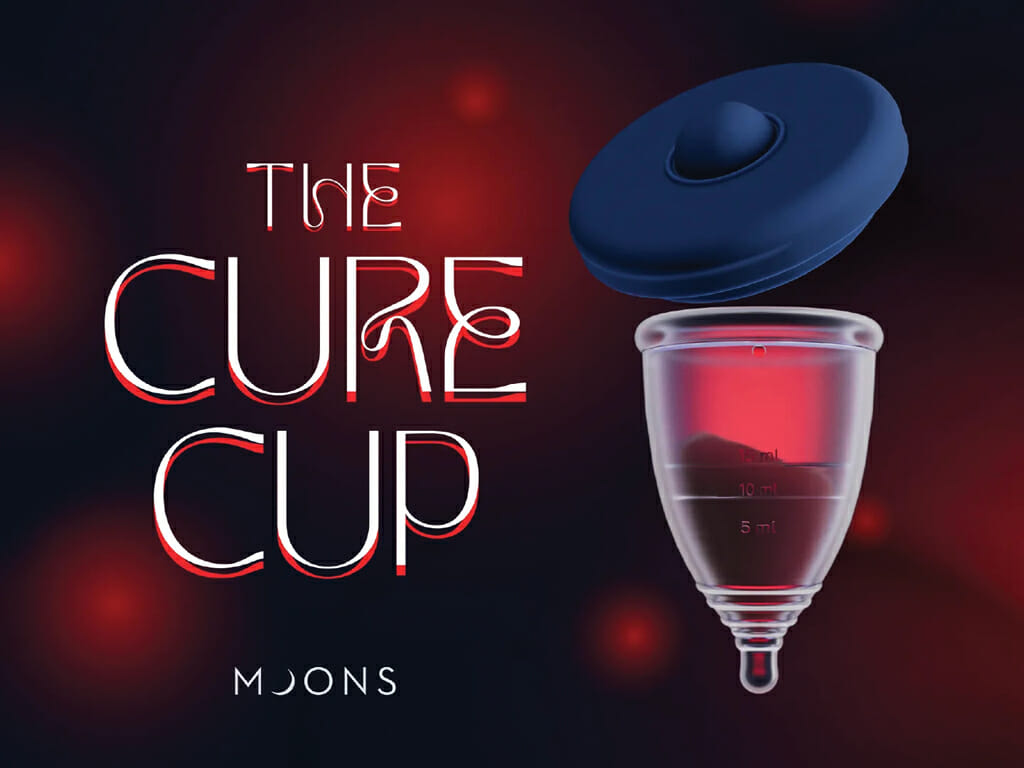As Franklin Williams and his Area 23 colleagues developed Eyedar, a first-of-its-kind app that allows blind people to visualize their surroundings, one of the most humbling insights had to do with human hearing. Or, more accurately, human listening.
Working closely with Nick Gomberg, a UX expert born without eyes, the team set the app’s voiceover speed at what it believed to be a normal pace. However, Gomberg objected.
“Nick kept saying, ‘That’s too slow,’” recalls Williams, EVP and director of experience design at Area 23. “He told us, ‘You have to realize that the entire world comes in through my ears. I process information way faster than you do.’”

The developers thus sped up the voice on the echolocation app — created on behalf of Horizon Therapeutics, the maker of thyroid eye disease medication Tepezza — to more than two times the normal speed. “It was too fast for us. But it was an important way to open ourselves up to the realities of blind people’s experience,” Williams adds.
To Williams, that is why health technologists rank as one of the most important players in the industry’s ongoing inclusivity efforts: They understand the need for greater empathy. “It’s about sharing the feelings of another person or group or community. Too many people want to start with the solution. But technology is just the secondary step, after empathy,” he explains.
Armed with what they believe to be a better understanding of the challenges faced by marginalized communities, companies such as Horizon have turned to technology to drive equity and inclusivity. Techno-empathy, an approach that puts the user’s experience at the forefront, guides marketers in creating solutions that address specific needs of underserved populations. Through innovative apps, wearable devices and tailored interventions, these companies are leading the charge for a more inclusive and empathic healthcare system.
The biggest inclusion ideas, it should be noted, often come from the smallest companies. Frequently, they are hatched by individuals in patient populations that have been under-included for too long. Like women.
“Women have different biology than men, and historically they haven’t been equally represented in clinical trials,” notes Naomi Fried, CEO and founder of PharmStars, an accelerator based in Boston that works with digital health startups. She adds the industry typically devotes just 1% of its R&D budget to women’s health issues.
When Fried recently launched a 10-week program that focused on women’s health, she did so believing she understood those disparities. She was, by her own admission, very wrong.
For instance, a startup called Vio Healthtech assesses drug efficacy using a wearable that detects menstrual cycle timing. “I only learned through this series that women respond differently to medication due to menstrual hormone fluctuations and that 70% of all drugs are affected by that cyclical timing,” Fried explains. “Drugs for diabetes, cardiovascular issues, cancer and depression are all affected.”

Another participant in the PharmStars program, MiMark, aims to replace painful gynecological diagnostic tactics with non-invasive liquid biopsies. Then there’s Samphire Neuroscience, which tracks period pain and low mood with a headband. “No one can tell it’s a medical device,” Fried notes.
Some of the nascent tech offerings target specific health disparities. My Moves Matter, designed to assist women with Parkinson’s, incorporates features that accommodate specific needs (e.g., speech input instead of typing). All favor effectiveness over engineering razzle-dazzle — and all first and foremost approach their would-be users with empathy.
“It’s about the importance of meeting people on the platforms they already use,” Fried says.
Issues related to trust, privacy and data protection are critical across the healthcare ecosystem. But they take on outsized importance among marginalized groups, who have ample reason to regard providers, insurers and drug companies as hard-hearted (and even dangerous) adversaries. Patients are keenly aware that advances in artificial intelligence and machine learning could potentially be used against them.
“People worry that pharma companies could re-identify patients, targeting them with one-to-one interactions based on diagnosis,” explains Dan Fisher, managing director and practice lead at Real Chemistry’s IPM.ai.
Despite those fears, AI has enormous potential to make healthcare solutions more diverse, inclusive and accurate. Fisher says that while many projects start with a dissociated view of the healthcare landscape, a certain understanding gradually kicks in.
“Then we ask how we can remove inherent biases within the care that patients receive and the setting in which they receive care, and how we can use health data to solve them,” he says.
To Fisher, that cuts to the very essence of techno-empathy: “How can we use AI to better feel the human experience? How do we find patients from the bottom up?”
By all accounts, it’s working. Take the ability to match social determinants of health, such as race, age, income and neighborhood, with health data.
“Historically, the match has been pretty poor, but now we can crosswalk that data,” Fisher says. “In some recent work on liver cancers, we’ve even surprised ourselves by matching 90% of patients.”
The data also reveal the providers who most effectively reach and serve certain populations — and which ones need more support.
“When certain providers have a larger share of these patients, we can ask, ‘What can we learn from them?’ And when they have fewer, pharma companies can decide how to generate awareness and educational tools,” Fisher continues, noting that IPM.ai currently has about 300 million unique and de-identified patients in its data mix. “So rather than a top-down method, hoping that we find patients that meet clinical criteria, we’re now able to look at the individual patient level and see who meets the specific needs of a given trial.”
This can help solve an ongoing problem, especially in the realm of rare disease: Too often, by the time patients become aware of their condition, they have passed a determinative interventional point. “Machine learning is helping us predict which patients might have rare diseases and not know it, and that may be one of the most productive uses of technology for our clients. It will help healthcare professionals find the right intervention point,” Fisher says.
For Astellas Gene Therapies, IPM.ai constructed a machine-learning model to support a drug for myotubular myopathy, a rare neuromuscular disease with no approved therapies. As a result, the organizations were able to uncover 10% of the likely patient population.
This should go without saying, but it’s not all about the technology. The best marketers and health technologists have long since realized that speaking with ignored groups, as opposed to speaking at them, remains crucial. Similarly, they finally understand that tone of voice matters more than most pharma execs would allow.
Everything they do requires deep listening. And when brands get it right, the rewards are deeply gratifying.
Working alongside Real Chemistry’s 21Grams, Moons, a menstrual cup company, recently engineered The Cure Cup. While society has long regarded menstrual fluid as off-putting, Moons hoped to call attention to the fact that it contains valuable stem cells that can further many types of research.
The campaign offers users cups with a special cap. After collecting their menstrual fluid, they lock on the lid and mail it to Moons — and hope their contribution could lead to a medical breakthrough.
21Grams VPs and creative directors Katie Dean and Clay MacGuire appreciated the freedom of creating such a radical campaign in a category long dominated by fake blue bodily fluids and pristine white clothing. They also loved seeing women respond to the knowledge their menstrual fluid is useful.
“We were impressed by the large internal shift participants had en masse,” Dean says in response to emailed questions. “We heard from person after person how difficult it has been to live with period shame and how free they finally feel being rid of that. Tech can facilitate an emotional experience for people by seeing, acknowledging and amplifying their human experiences.”

Using the right tone of voice similarly contributed to the success of the Lyme Bomb Detector, created for the Global Lyme Alliance by Eversana Intouch. Designed to help people with Black skin determine if they had Lyme disease, the tech and campaign teams had to find the right way to introduce a new audience to the disease, not to mention the ticks that carry it.
Hardy New England types have been fending off these arthropods for years, but ticks have now infiltrated city parks and many urban dwellers don’t know how to spot them. The campaign extended to diagnosis: It had to alert Black audiences to the bad news that, if an infected tick bites them, they may go undiagnosed longer because providers struggle to diagnose the telltale bull’s-eye rash on melanated skin.
According to Eversana Intouch chief creative officer Susan Perlbachs, the organizations were quick to acknowledge the limitations of physicians’ detection methods as well as the shortcomings of existing technologies.
“We were working on a lot of projects with AI, incorporating it into the way we develop strategy, content and content optimization. We thought we may be able to speed diagnosis by using AI,” she recalls via email. “We became confident we could develop an app that would leverage recent AI advancements, particularly in dermatology, to detect Lyme disease early more effectively. And it paid off.”
While the “tick-nology” enables users to diagnose a likely infection and connect with providers, presenting it in a way that would resonate with target audiences was no easy task. “We had to balance information about ticks, their habitats and prevention strategies while also focusing on the nuances of rash presentation on Black skin,” Perlbachs says. “We were able to empower users with comprehensive knowledge of Lyme disease, irrespective of skin color, and provide a method for early detection for those most at risk.”
Perlbachs adds the experience has hammered home a key learning: All marketers can be more inclusive. “That could mean speeding diagnosis, as we did here. It may mean making certain tasks or challenges easier,” she continues. “But brand acts are much more powerful than words. We must show we support physicians and patient communities, not just tell them.”
Williams agrees, adding that if health technology can’t provide genuine benefits to multiple community members, it’s not much use to anyone. He is proud that Eyedar is as useful for blind people who are timid about leaving their homes as it might be for blind skateboarders.
“We can’t create one experience, because we don’t want to tell people who they are,” he says. “We want them to tell us who they are and then use technology to enhance where they are.”
The takeaway for others hoping to follow a similar path? Begin with empathy and the deeper listening it demands.
“Too many people start with the solution and go right to the end,” Williams continues. “And then they retrofit the problem to serve the technology they’ve already defined.”
Brands that get it wrong run a big risk. “Patient advocacy populations can tell if technology is for their community or if it’s from a company trying to make money — and the moment they sense that, they’ll shut you down,” Williams adds. “If they sense sincere efforts to make experiences more equitable, they’ll move heaven and earth to make sure that the community gets access to what you’ve got.”
From the August 01, 2023 Issue of MM+M - Medical Marketing and Media







